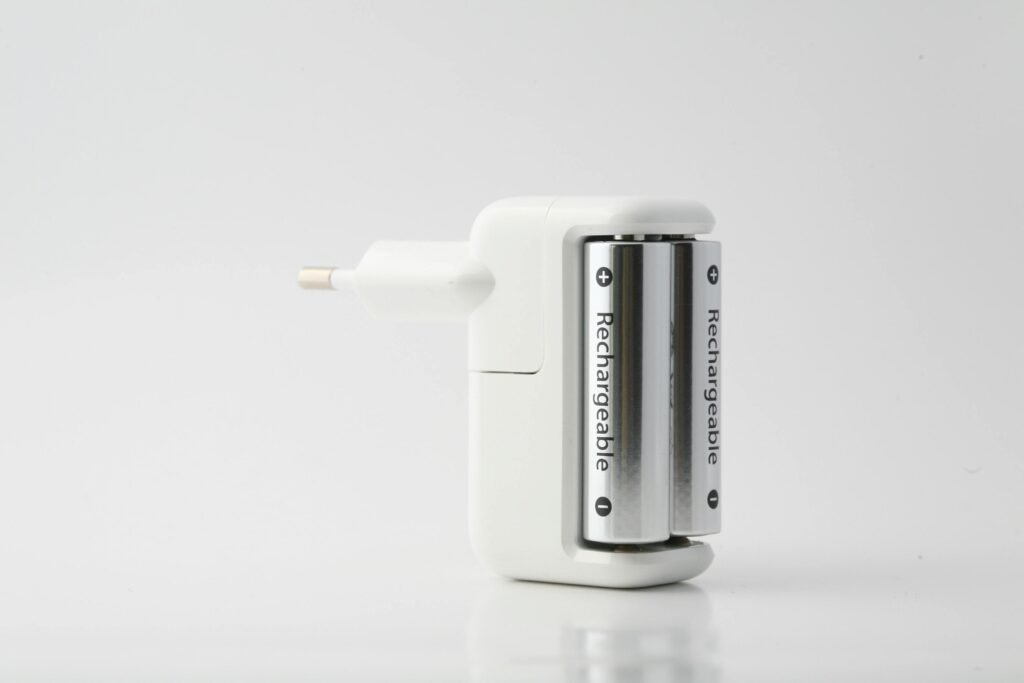
Every day, people toss out items they no longer want—clothes that do not fit, books they have read, tools collecting dust. This waste stacks up in landfills across the globe, while producing replacements burns through energy, water, and raw materials, straining an already fragile planet. What if there was a quieter, smarter way to keep these things in circulation? Silent Swap Shops offer a fresh answer: drop off what you are done with, pick up what you need, and do it all without speaking. Guided by signs instead of words, this simple idea cuts waste and pushes us toward a greener way of living.
This blog dives deep into Silent Swap Shops. You will learn what they are, how to set one up step-by-step, and why they matter—no matter where you live. It is a practical plan with a worldwide pulse, and by the end, you will see how it could work for you.
What Are Silent Swap Shops?
Picture a table under a shady tree or a tent near a busy walkway. Silent Swap Shops are places where people trade items in quiet harmony. You bring something you do not need anymore—maybe a pair of pants, a novel, or a wrench—and set it in a reusable box or bag. Then you browse what others have left and take something useful, like a scarf or a kitchen tool. Signs lead the way: “Drop Off Here,” “Take What You Need,” “Stay Quiet.” No chatting, no haggling—just a swift, peaceful swap.
This is not a noisy market with shouting vendors or an online exchange with endless messages. The silence sets it apart. It keeps everything quick and calm, letting you focus on the trade itself. You leave with something new, and your old stuff avoids the trash pile. It is a hush that carries a big purpose.
Why Do This?
Waste is a problem everywhere. When clothes, books, or tools land in dumps, they rot and release methane—a gas that traps heat and speeds up climate change. Meanwhile, making new things eats up resources: oil for plastics, trees for paper, water for fabrics. Trading breaks this wasteful cycle. That shirt you have outgrown could warm someone else. The book you have read twice might delight a new reader. By swapping, you extend the life of what is already here, reducing the need for more production.
The no-talking twist brings its own magic. Conversations can slow things down—bargaining or chatting takes effort. Silence skips that entirely. Whether you are in a bustling city square or a sleepy rural corner, it is a fast, stress-free way to trade. You save time, others get what they need, and the planet gains without a sound. It is a quiet win with a global reach.

How Does It Work?
Starting a Silent Swap Shop is simple—it does not need a big crew or fancy gear. Anyone can do it, from one person with an idea to a group effort. Here is how it comes together in detail:
1. Choose a Location:
Find a public spot with some foot traffic—a park bench area, a school courtyard, a shaded patch near a transit stop, or even your front entrance of your house if you are starting small. It should have space for a table or two, some containers, and a few people moving around without bumping into each other.
2. Put Up Signs:
Grab sturdy material—cardboard, wood, or an old chalkboard—and write clear, bold instructions. “Leave Items Here” marks the drop-off zone. “Take What You Like” points to the pickup area. Add “One Each Please” if you want fairness, or “Keep Quiet” to set the tone. Make the words large so they are easy to read from a few steps away—signs are the voice of this swap.
3. Use Reusable Containers:
Skip flimsy plastic bags that add to the trash mess. Use old wooden crates, sturdy cloth sacks, or woven baskets—items you might already have at home. Label them if you like: “Clothes” on one, “Books” on another, “Tools” on a third. It keeps things organized and looks cleaner.
4. Spread the Word:
Share the plan without making it complicated. Pin a flyer to a local notice board, send a quick message to friends, or mention it to neighbors. Keep it short: “Silent Swap Shop, Saturday, 10 a.m., Park Near the Big Tree.” Word travels fast when it’s easy—people tell others, and soon you have got a crowd.
5. Run the Swap:
On the day, people arrive with their items, drop them in the right containers, and browse what is there. If you are organizing, stand off to the side—maybe sip a tea—and let the signs guide them. If someone looks puzzled, point to the instructions. You will hear footsteps and rustling bags, but no chatter. It wraps up in an hour or two.
6. Tidy Up:
When it is over, gather anything left behind. Take it to a local charity—shelters, orphanages, or secondhand shops welcome donations—or save it for the next swap. Wipe down the table, fold up the tent if you used one, and set a date to do it again. It is low fuss, high impact.
Weekly swaps create a rhythm—Saturday mornings work well in most places, from busy urban parks to quiet community spots. Once people know the when and where, they will return with more to trade.
What Can You Swap?
The best items are small and practical. Clothes fit perfectly—cotton tops, wool sweaters, or denim jackets all find takers. Books travel easily—novels, textbooks, or kids’ stories in any language. Tools like hammers, screwdrivers, or garden clippers help someone build or grow. Small kitchen goods—steel cups, frying pans, or wooden spoons—work too. The guideline is clear: if it is functional and portable, it is swappable. Leave broken junk or bulky furniture behind—no one wants to lug those.
Reusable containers make it smooth. A jute bag or bamboo box holds drop-offs better than throwaway plastic, aligning with the green goal. People walk away with free treasures, and the waste cycle slows.
Who Runs It?
You do not need a big group—just one person with a spark can start it. It could be you setting up a table outside your home. Or a school group claiming a playground corner. A place of worship or a neighborhood crew could open their space. It begins small—one organizer with a plan—and grows if others join. Friends might help with signs, or a neighbor could sort leftovers, but it’s not required.
No money changes hands, keeping it open to all. A child with an old toy swaps just like a worker with a spare shirt or an elder with a teapot. It is equal footing for everyone, wherever they live.

What Could Happen?
The effects pile up quickly. One swap might keep a hefty pile of clothes, books, and tools out of the dump—less trash clogging drains or fields. Do it 10 times, and the savings grow even more. In a town where 100 people swap weekly, you could save massive amounts of waste over a year—cutting methane in the air and easing the push for new factories. The exact amount depends on the place, but the trend is clear: less garbage, less damage.
People save cash too—why buy what you can swap for free? Communities get a subtle lift—neighbours nod as they pass, kids learn sharing is easy, and everyone reuses a bit more. From crowded cities to rural edges, it is a green habit that spreads quietly but lasts.
Challenges Exist
Things won’t always go perfectly. Rain can drench items if you are outside—bring a tarp or pick a spot with a roof. Too many drop-offs might clutter the space; a sign like “Five Items Max” keeps it under control. Some might take without giving—a “Swap, Don’t Grab” note encourages fairness. Leftovers can stack up after a busy day, so have a plan—drop them at a charity or store them for next time.
Silence might slip if a crowd gets talkative, but a “Keep Quiet Please” sign usually reins it in. These are small hurdles, not stoppers. The idea keeps rolling with a little tweaking.
Real Examples Today
Swapping is not brand new—it is already happening. Libraries run book exchanges, with shelves emptying and refilling fast. Clothing swaps at fairs trade traditional garments for modern ones. Silent Swap Shops take it further by cutting the noise—quicker, simpler, quieter. A group at a market square tested it: 60 people swapped in an hour, no words needed, and the trash stayed empty. Another at a beachside park did the same. It works, and it is spreading.
How to Start
Start small to test the waters. Pick a spot—your building’s entrance, a village square, or a park near a bus stop. Grab a table or mat, some old bags or crates, and a marker for signs. Tell five people—friends, family, coworkers—to bring something this Saturday at 10 a.m. Step back and watch them trade in silence. If it flows, invite 10 more next time, then 20. Snap a photo or a short video—share it with a note like “Silent Swap Success!” Others will pick up the idea.
You can do this wherever you are. Dig through your shelves, choose a place, and set it up this weekend. Trade in peace, and let the planet feel the loud reward.
Conclusion
Silent Swap Shops turn old clutter into fresh finds, all without a word. Drop off a shirt, pick up a tool—signs keep it smooth, and waste fades away. Set one up weekly at a park, a street, or a corner near you—it’s a quiet trade with a roaring green echo. Silent swap shops fit anywhere people live and discard, across the world. Do not wait—grab something to swap and start your today.
Frequently Asked Questions (FAQs)
What happens if too many people show up?
A big crowd can make things messy, but it is manageable. If the table gets swamped with items or people, set a limit—put up a sign like “Five Items Max Per Person” to keep it fair. Organizers can bring extra boxes or bags to handle the overflow. The swap might take a bit longer, but the signs still guide everyone. Silence keeps it calm, even when it is busy.
How do you stop people from taking without giving?
Some might grab stuff and leave nothing behind—it happens. A clear sign like “Swap, Don’t Take” reminds them to contribute. Organizers can watch from a distance and point to the rules if needed. Most people get the spirit of trading once they see others doing it. Over time, fairness becomes the norm as the habit spreads.
Can kids join the swap too?
Yes, kids can absolutely take part! They might bring old toys, storybooks, or clothes they’ve outgrown—things that other children could use. Parents can help them follow the signs, like “Drop Here” or “Take One.” It is a fun way for them to learn sharing and reusing. Everyone, young or old, fits into this quiet trade.
Do share your thoughts by commenting below.






